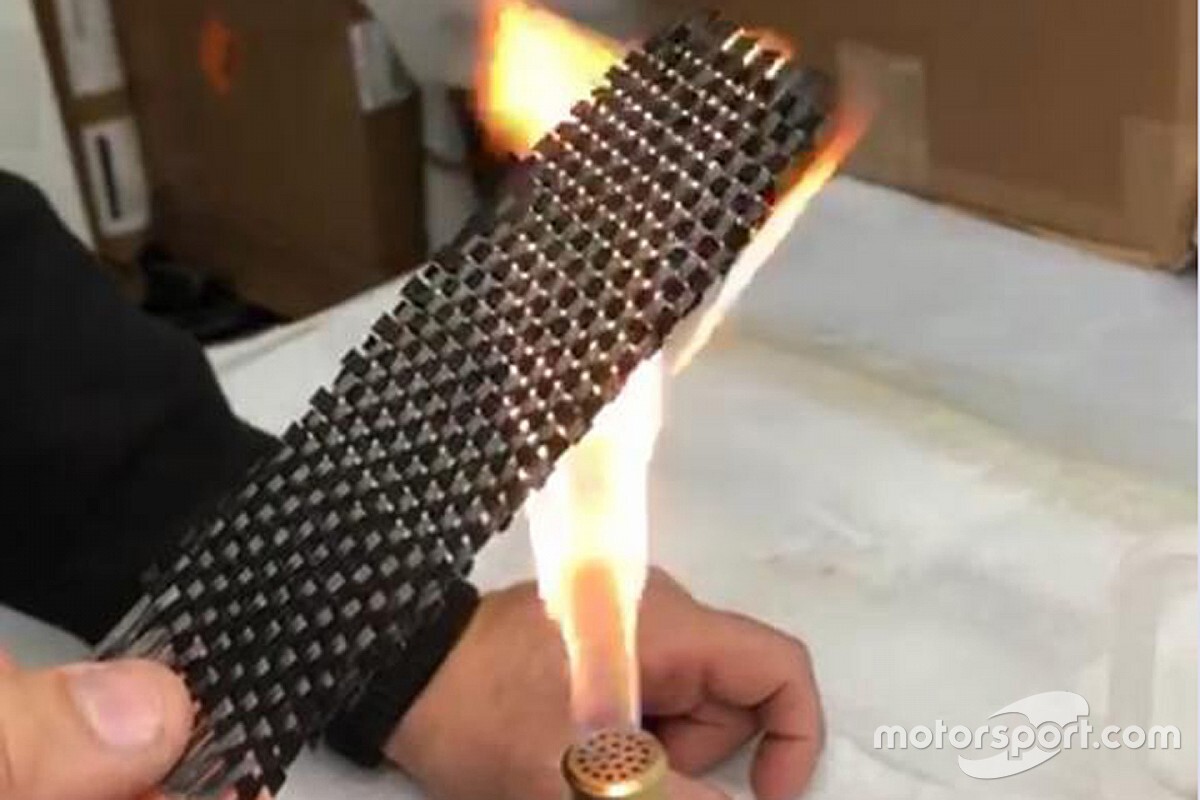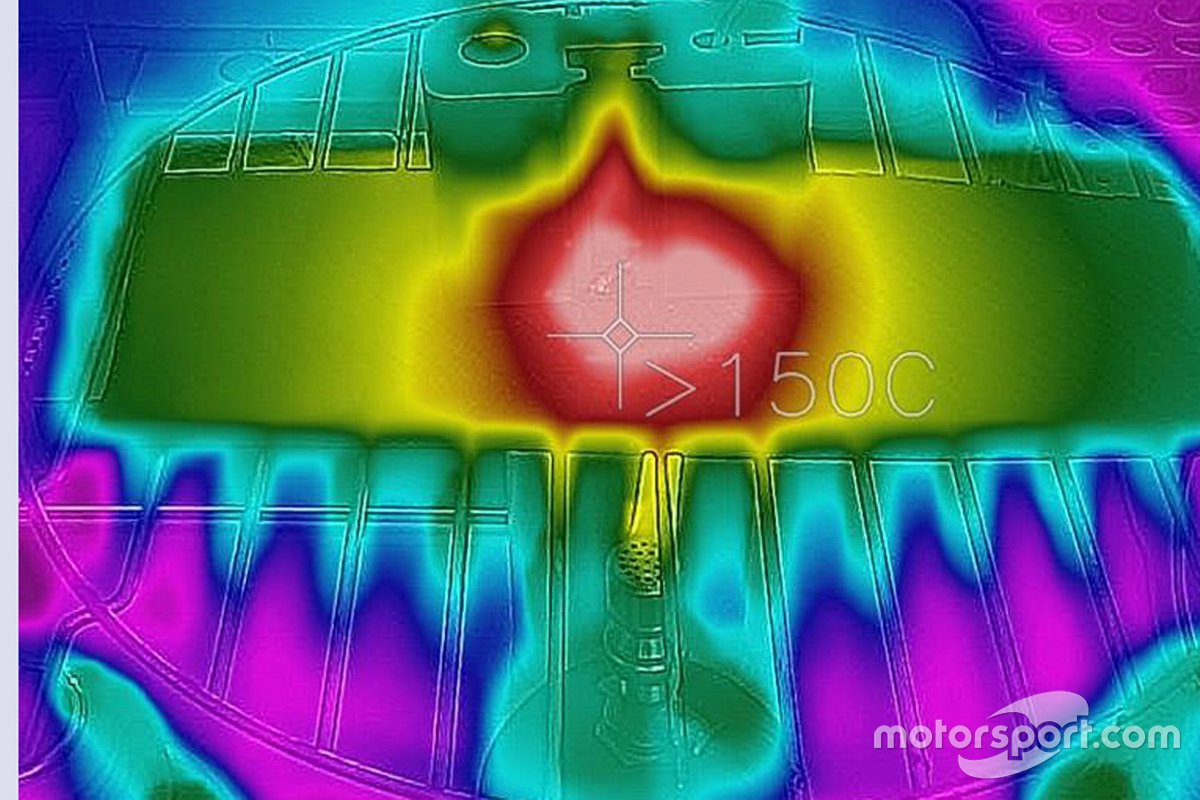F1: Nanoprom launches the carbon thermal barrier

Gian Luca Falleti's researchers have experimented in the Nanoprom Chemicals laboratory with a new product that allows to change the known concepts on the protection of surfaces from a heat source. Thanks to the Polysil Thermal Shield 2.8 it will be possible to reduce the temperature generated by an open flame by up to 65%. Will we see single-seaters with smaller radiators and fireproof clothing that can last longer in the flames?
In Formula 1 the Nanoprom has made a name for itself thanks to Polysil, the black silicon nanotechnology that had already been adopted by many teams in 2014 to improve the thermal transmittance of the rim and help bring the tires into the right working window.
Some time has passed since then, but the dynamic company from Sassuolo has evolved and made large investments in the field of chemistry, so much so that it is now ready to revolutionize not only the world of Grand Prix with a solution destined to be discussed. Very.
The researchers of Gian Luca Falleti, in fact, have studied in the laboratory of Nanoprom Chemicals a new product destined to change the concepts known up to now on the protection of surfaces from a heat source.
Thanks to the Polysil Thermal Shield 2.8 it is now possible to reduce the temperature generated by an open flame by up to 65%, changing the approaches to cooling and safety standards in an endless field of applications.
Falleti worked on the most difficult materials to treat such as carbon and glass composite fibers, not to mention Kevlar and Nomex.
Carbon fiber subjected to high temperatures usually loses its characteristics of great stiffness and delaminates. The experimental data that are emerging, however, are simply amazing so much so that the Nanoprom solution is obtaining approvals for use in the aerospace field.
Impregnating the carbon in depth is one of the problems faced, since it is difficult to convey the material between one fiber and another. Through a pre-treatment with a process developed by Nanoprom, the technicians were able to penetrate the carbon fibers with their product, eliminating 100% epoxy resins.
What advantage has it given? Having an extraordinary resistance to flame unthinkable until today.
“A 4-layer carbon bulkhead - explains Gian Luca Falleti - has a capacity to reduce heat exchange by 65% and has a resistance of over 100 minutes to direct flame. The first thing that was noticed experimentally was the total lack of smoke generated by the compound. If the flame temperature has reached almost 700 degrees, 300 degrees on the upper wall of the carbon bulkhead have not reached 300 degrees after half an hour of exposure to the heat source ".
How did you get these results in the lab?
"After laminating the carbon with our silicon resin equipped with some bonds that are obviously top secret, we introduced it into the plasma machine and with the high vacuum we were able to eliminate any form of solvent that, otherwise, could feed the flame and make our protection ineffective ".
“Thanks to Plasmatech and our collaborators we have been able to obtain a great result not only on carbon, but also on glass fiber which can achieve an important structural seal. With the Polysil Thermal Shield there is no carbon delamination: the weave remains unchanged, without damage or creasing of the fibers. Not only that, but there is no heat propagation, so the high temperature is limited to the area immediately facing the flame, but does not extend to the foil ".

Test with carbon sheet treated by Nanoprom and exposed to open flame: the heat of 700 degrees does not propagate
Have you also carried out experiments with 2 layers of Kevlar and 4 of Nomex, 2 on each side to cover and what results have emerged?
"That after 1 minute the surface subjected to direct flame maintained a temperature of 40 degrees, which then only rose to 80 degrees after 2 minutes and stabilized around 100 degrees after 3 minutes".
It is inevitable to immediately think about the fireproof clothing of the pilots that only thanks to a different treatment could allow much longer rescue times in the event of an accident without the driver reporting any burns due to flames or heat!
But remaining in the field of F1 one would think how much the cooling systems of the power unit could be miniaturized, reducing the radiant masses to the advantage of a lower resistance to advancement and, therefore, a higher top speed. Not only that, but the heat-resistant bulkheads are also used to "dress" the heat engine and promote better fluid dynamics inside the bellies. Therefore, in addition to reliability, performance could be sought.
Another sensitive area is that of the hybrid battery: the famous carbon "case" located under the tank and the driver's seat could be even better protected and insulated, since it must be cooled. And, here a direct connection with the automotive world immediately opens up. It will be interesting to understand who will be able to exploit this very innovative nanotechnology first ...
[Source: it.motorsport.com ]
